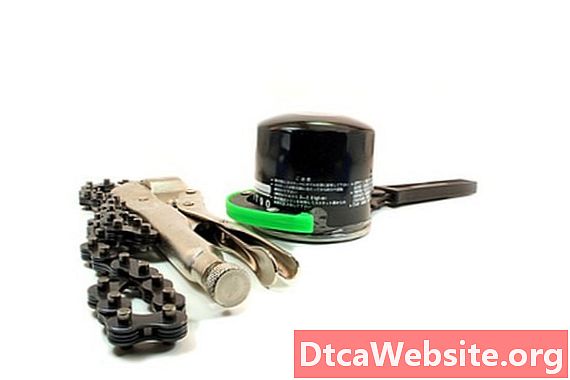
Contenu

There are many reasons why a Saturn car may not start. By checking a few simple things under the hood, the vehicle owner may be able to get to the root of the problem. If the simple things check out, the problem may be more complicated and may require a diagnostic opinion. Its best to start wit the simplest and most most cost-effective diagnostics before moving on to a professional opinion.
Step 1
Look at the fuel gauge to determine if the car is out of gas. If the gauge shows that the car has gas, put three to five gallons of gasoline into the fuel tank just to be sure the gas gauge isnt faulty. Make sure the engine is completely cool before checking the oil. Ideally the car should be parked on a level surface. Open the hood of the Saturn and prop it up using the hood prop rod, which is usually located along the front rail. Locate the oil dipstick, which, depending on the model of the Saturn, may be located toward the front of the car or on the left side of the engine. The dipstick usually has a yellow looped handle. Holding a clean cloth in one hand, use your other hand to pull the dipstick out and wipe it clean with the cloth. Note where the crosshatch pattern near the bottom of the stick is. This is what indicates if the car has enough oil. Insert the dipstick back into its original location, making sure its all the way in. Remove the dipstick again and inspect the oil line and how close it is to the crosshatch. If the dipstick is completely free of oil, the car is out of oil, which may mean there is an oil leak. Check the owners manual to determine how much oil your particular car needs and which oil to use. Replace missing oil in the car according to the manual.
Step 2
Change the fuel filter. Ideally, the fuel filter should be changed every 30,000 miles. Disconnect the relay fuse from the outlet in the fuse box inside of the car. This compartment may be located in different spots, depending on the car. Check the owners manual to determine where it is located in your vehicle. Jack the rear end of the vehicle up using car jacks, supporting the back with jack stands. Place a drip pan underneath the fuel line. Locate the fuel filter on your car and find the two tabs that hold the filter in place. Pinch the tabs with your fingers until the filter is released. Lower the released fuel filter into the drip pan. Mount the new filter according to the direction of the arrows. When you hear the fuel filter snap into place, it is securely installed. Plug the fuel relay fuse back into the socket. Try turning the key in the ignition slowly, resting three to five seconds in between each try (if the car doesnt start). If the car is going to start, it may start on the fifth or sixth try. If this does not work, move onto the next troubleshooting step.
Hook the leads to the battery of a multimeter electric tester. Turn the dial to the "DC" mark. If the engine is not running, the meter should read at about 12 volts. Try cranking the engine while having someone read the meter. It should read at about 9 volts. If it is lower, the battery may need to be recharged or replaced. Next, check the battery cables. To do this, loosen the bolt on the black negative cable first, using a box wrench or cable-clamp pliers, and wiggle the cable off of the post. Do the same with the red positive cable. Remove both cables from the battery. Follow the negative cable to where it is grounded and use a wrench to remove the cable. Do the same with the positive cable. Using a small wire brush or cable cleaner, clean the posts. Using a clean, dry cloth, wipe off the residual dust. When attaching the new cables, attach the positive cable first and put the negative cable on last. Try starting the car.
Items you will need
- Clean rag
- Multimeter
- Drip pan
- Wire brush or cable cleaner
- Box wrench or cable clamp pliers


